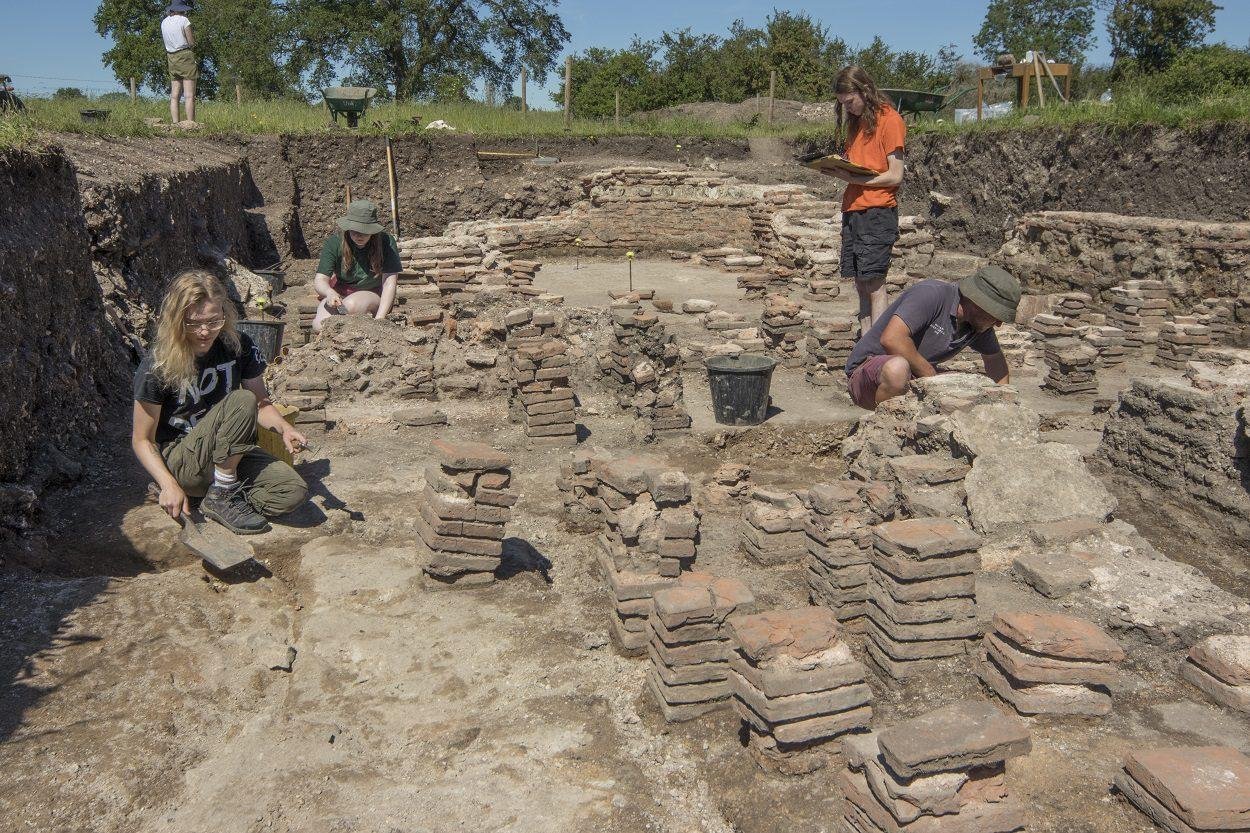A forthcoming exhibition тιтled “Becoming Roman – Silchester, a Town of Change” will showcase remarkable discoveries unearthed over the past 50 years from archaeological digs led by the University of Reading at the ancient Roman site of Silchester in Hampshire, England.
 Credit: University of Reading
Credit: University of Reading
The exhibition, scheduled to tour various museums, offers a captivating journey into the past, revealing the life of the Gaulish tribe that founded the settlement and exploring the transformations following the Roman Conquest of Britain.
Professor Michael Fulford, the Director of the Silchester Town Life Project at the University of Reading, expressed enthusiasm for contributing to an exhibition highlighting discoveries from the University’s excavations. He said: “The objects on display range from those illustrating the international contacts of the Iron Age town beneath the Romans to those that show how life changed after the Roman conquest.” He extended graтιтude to generations of students and local volunteers who contributed to the success of the excavations over the past five decades.
The exhibition will feature 150 items, including terracotta floor tiles preserving footprints of animals and children, a Roman grain storage jar, intricately carved gemstones, and a Roman roof tile stamped with Nero’s mark. Visitors will gain information about ongoing archaeological digs that continue to unravel Silchester’s secrets.
Silchester, once a prosperous capital with its Iron Age mint, engaged in trade not only with neighboring British tribes but also with the broader Roman Mediterranean world. The exhibition sheds light on the town’s trading prowess and metalworking skills, showcasing chariot fittings and a discovered smithy.
As the Romans arrived, inevitable changes ensued. The exhibition explores how the Iron Age settlement, known for its round houses, evolved with the introduction of a Roman street grid, a forum, and a bathhouse. Visitors will learn about the functioning of a Roman bathhouse, complete with a complex underfloor heating and gas system, and view personal items like hairpins and jewelry left behind by bathhouse users.
According to Nick Suffolk, Head of Heritage Experience at Hampshire Cultural Trust, many everyday items provide an emotional connection to real people who lived 2,000 years ago.
“Becoming Roman – Silchester, a Town of Change contains so many objects that give us a frozen moment in time; from a footprint on a drying floor tile to hairpins lost in the Roman baths and coins dropped in the forum,” Suffolk said. “These little, everyday occurrences and misfortunes allow us to connect emotionally with the daily life of someone living thousands of years ago.”
In addition to the rich historical narrative, the exhibition provides a behind-the-scenes look at the ongoing archaeological dig. The excavation findings highlight the complex history of Silchester, initially occupied by the Atrebates tribe from Northern Gaul. The University of Reading’s press release emphasizes that the exhibition transports visitors 2000 years into the past, exploring the life of the Belgic tribe and the significant changes brought about by the Roman Conquest of Britain.
Becoming Roman – Silchester, a Town of Change, will tour the Red House Museum in Christchurch, Andover Museum, The new exhibition begins its tour at the Willis Museum and Sainsbury Gallery in Basingstoke on Saturday 10 February and will close on Sunday, 28 April.





